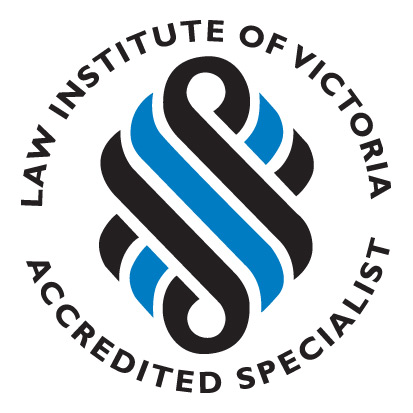It’s hard to imagine the difference that one document, often only one page in length, could make to the distribution of your estate.
It is a common misunderstanding that having a Will is all that is needed in estate planning. While a well-prepared Will is an essential part of any good estate plan, failing to make a Binding Death Benefit Nomination can have unintended and undesired consequences as to who gets your superannuation after your death.
What is a Binding Death Benefit Nomination?
A BDBN is a direction to the trustee of your superannuation fund to pay your death benefits to an eligible beneficiary or beneficiaries, or to your estate. Essentially, the BDBN overrides the decision of the trustee so that benefits are paid in accordance with your wishes rather than at the trustee’s discretion.
Superannuation does not automatically form part of your estate so without a BDBN, the beneficiaries would otherwise be decided by the trustee under the terms of the fund and relevant legislation.
Fortunately, most funds allow you to nominate your intended beneficiaries provided the nomination complies with the legislation and provisions of the trust deed (for example, spouses or children).
The trust deed for a Self Managed Super Fund (SMSF) can include provisions allowing members to make BDBNs. Many trust deeds already have these provisions in place. However if your SMSF does not allow for BDBNs, your lawyer can assist to formally amend the trust deed to allow for this.
A BDBN can also be tailored to take account of various contingencies. They can have cascading provisions which provide for an alternate beneficiary if one or more beneficiaries predeceases the fund member, identify a specific asset for a beneficiary and, where permitted, nominate how benefits are to be paid such as by lump sum or pension.
Who can I nominate?
Death benefits can only be paid to a dependant of the fund member or to the member’s legal personal representative (the executor or administrator of the estate).
A ‘dependant’ includes a spouse (including a de facto partner of same or opposite sex), a person with whom the fund member had an interdependency relationship, a child of any age or a person who is financially dependent on the member. A child includes a biological child, adopted child, step child and ex-nuptial child.
Financially independent adult children can be paid from the fund, but they may be taxed higher than other beneficiaries. The choice of beneficiary is therefore an important consideration when making a BDBN. The overall estate must be considered – sound financial and legal advice can make a big difference in the tax consequences to the person inheriting.
What is a valid BDBN?
Superannuation legislation and regulations provide rules for making BDBNs which generally include that:
- members are given sufficient information to understand their rights to require the trustee to provide the benefit;
- trustees must pay the benefit in accordance with the nomination provided those nominated are a member’s dependant/s or legal personal representative;
- the rules of the fund must allow members to make a nomination;
- the nomination must clearly indicate the portion of benefit payable to each beneficiary;
- the nomination must be in writing, signed and dated by the member and witnessed by two adults (who are not beneficiaries) who must declare that the nomination was signed in their presence;
- a member giving notice may amend, revoke or affirm the notice after it is made;
- the nomination lapses after three years.
It is generally accepted that not all of these rules apply to SMSFs, although there has been uncertainty surrounding this issue for some time. Accordingly, when preparing a BDBN for a SMSF it is necessary to look closely at the trust deed to ensure that a BDBN is permitted, that it is prepared in conformity with the deed, and does not fall short of those parts of the superannuation legislation and regulations that apply. Your lawyer can review the trust deed to ensure that the appropriate provisions are included and that the proposed BDBN will be effective.
Similarly, although the superannuation legislation provides that a BDBN will lapse after three years, it is considered that a BDBN made under a SMSF can be non-lapsing and last indefinitely. Despite this, it is highly recommended that all BDBNs be reviewed annually and in the event of a significant change in personal or financial circumstances (of both the member and anticipated beneficiaries).
Case studies – the importance of estate planning and reviewing a BDBN
It cannot be over-emphasised how important it is to regularly review your estate plan – this includes your Will, your Powers of Attorney and your BDBN. It’s hard to imagine the difference that one document, often only one page in length, could make to the distribution of your estate.
A 2005 case shows the consequences of leaving the distribution of your superannuation funds to your trustee’s discretion. In Katz v Grossman [2005] NSWSC 934 the deceased’s Will provided for equal distribution of the estate to his son and daughter. Considerable assets were held in an SMSF of which the daughter was trustee.
The daughter paid the entire SMSF balance (approximately $1 million) to herself rather than dividing it with her brother. Unfair you say? Probably, however despite the provisions in the Will, the Court determined that the daughter (a trustee and dependant under the SMSF) was legally permitted to pay herself.
More recently in Ioppolo and Hesford v Conti WASC 389 [2013] unintended consequences were the result of not considering an overall estate plan and the interplay between a Will and superannuation fund.
In her Will, the late Mrs Conti left her superannuation benefits to her children. She and her husband were trustees of an SMSF with considerable assets. After Mrs Conti died the trustee was replaced with a corporate trustee (a company controlled by the husband) which paid the deceased’s benefits to the husband.
Despite specific instructions in Mrs Conti’s Will that her husband was not to benefit from her interest in the SMSF, the Court found against the children’s claim to the funds.
Conclusion
Unless specific directions are made through a BDBN for the payment of your death benefits, the beneficiary of your superannuation fund could be determined by a trustee.
Regular review of your SMSF with your financial and legal advisors can assist in achieving maximum benefits from your fund. Just like having a routine health check-up, your SMSF should be monitored, analysed, and, if necessary, adjusted to achieve optimum performance. This includes having in place a BDBN that accurately reflects your testamentary wishes and reviewing it regularly to ensure it takes account of your changing financial and personal circumstances.
If you or someone you know wants more information or needs help or advice, please contact us on (03) 9592 3356; email us at office@citypacific.com.au or request a call back or go to our online booking form https://businesslawyersmelbourne.com.au/contact/


